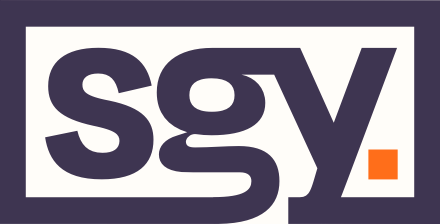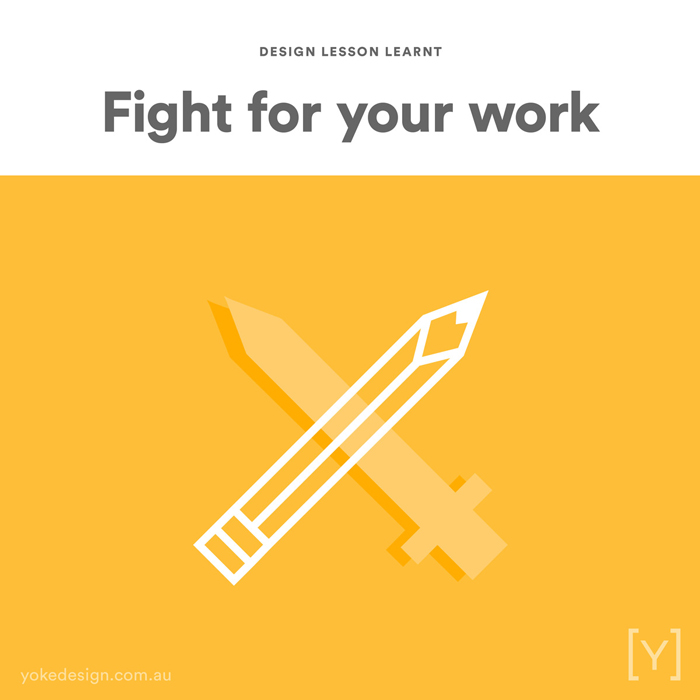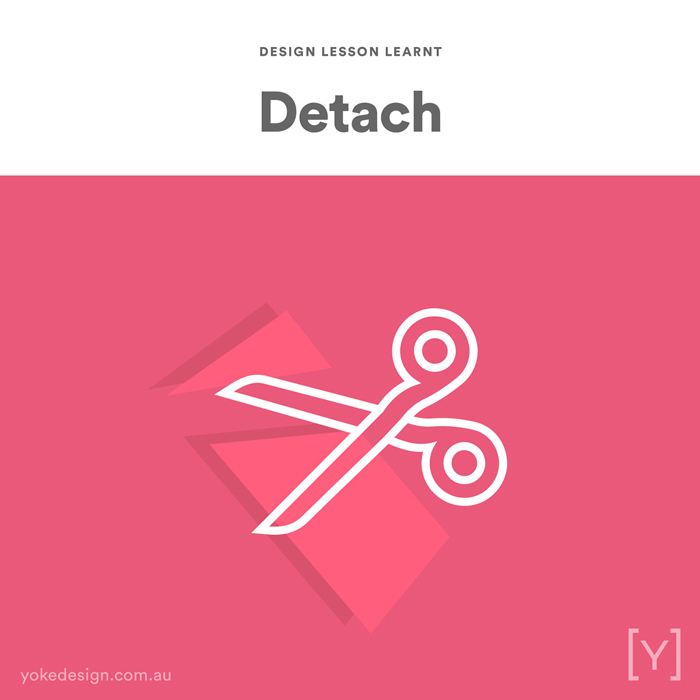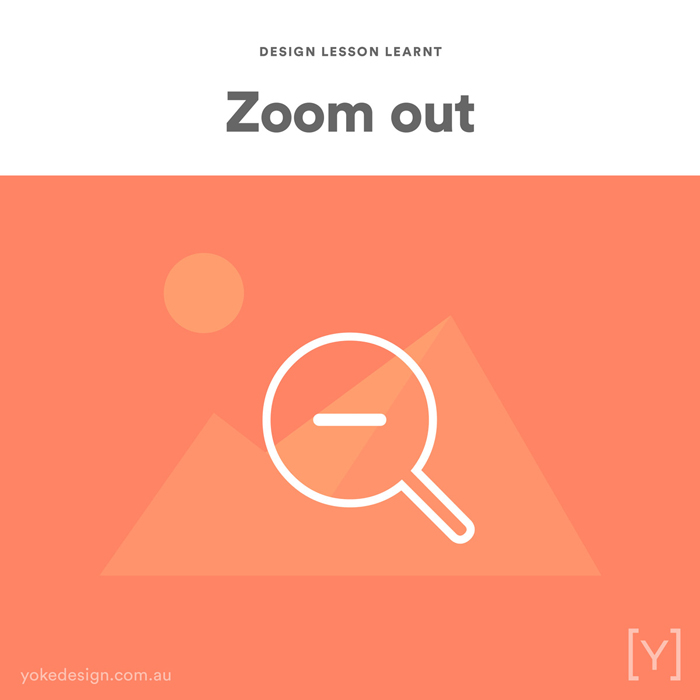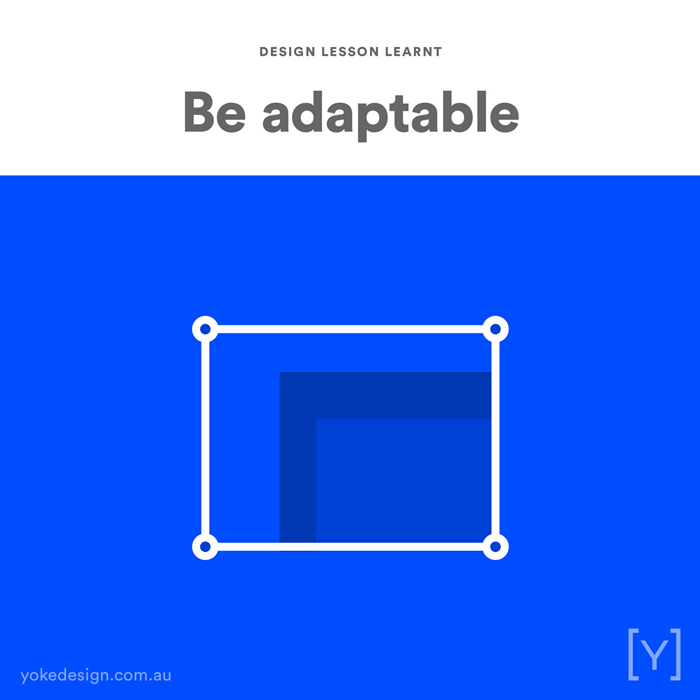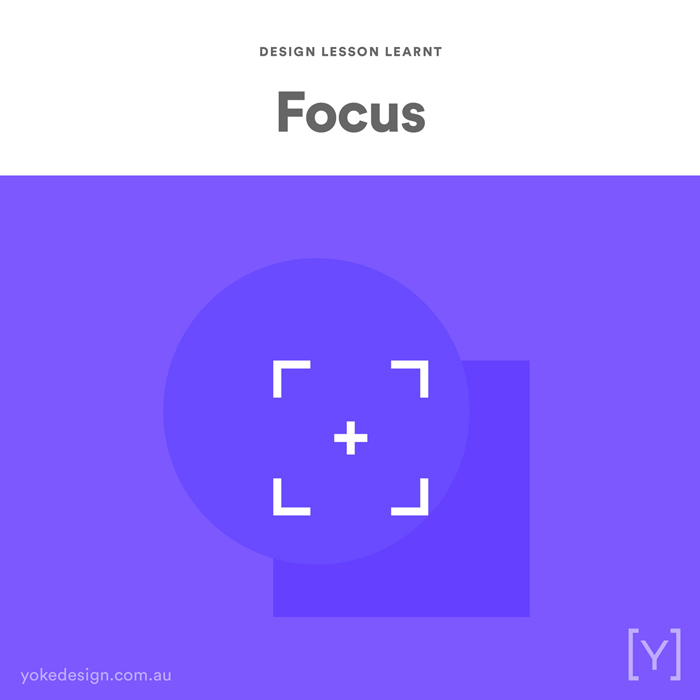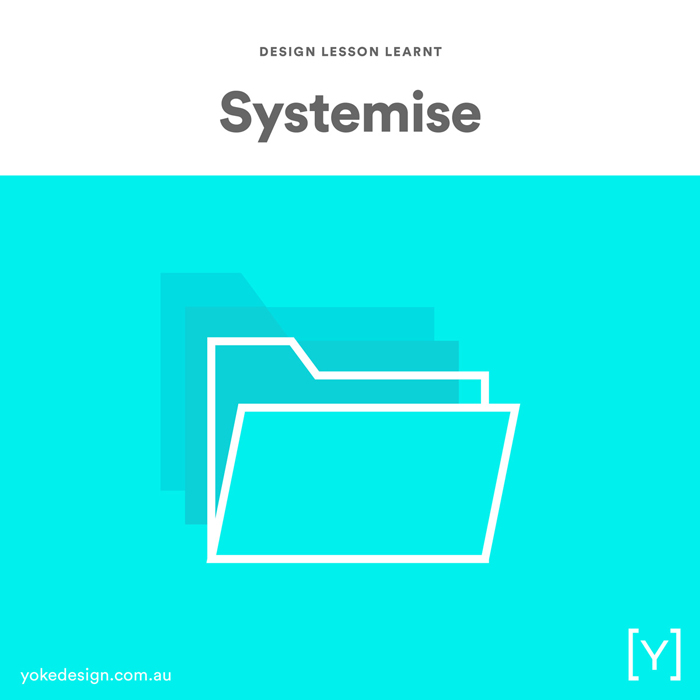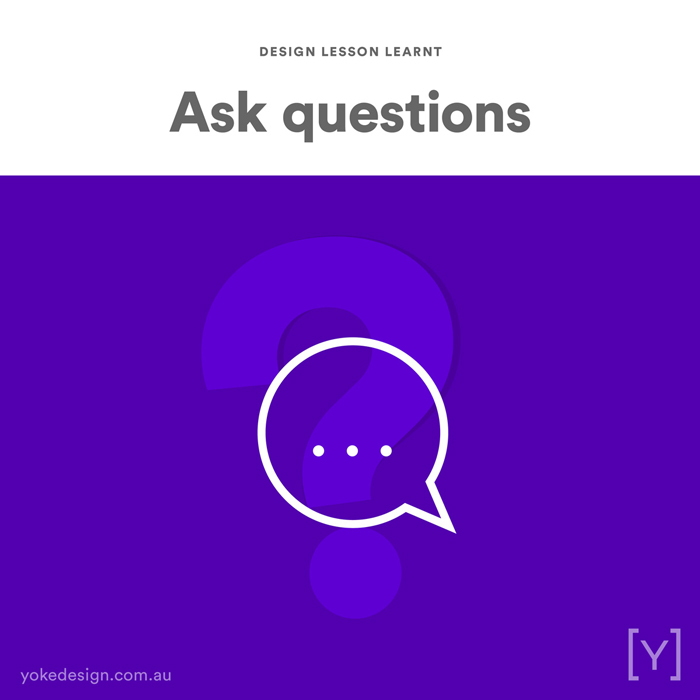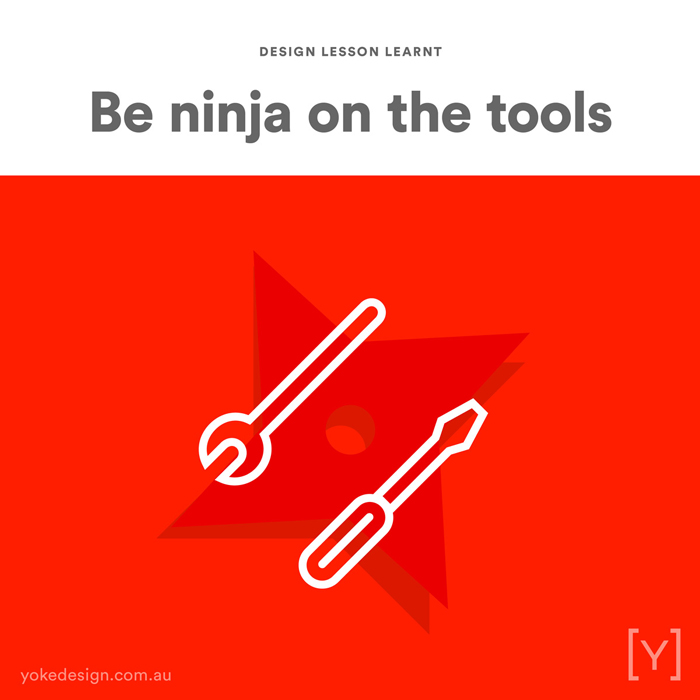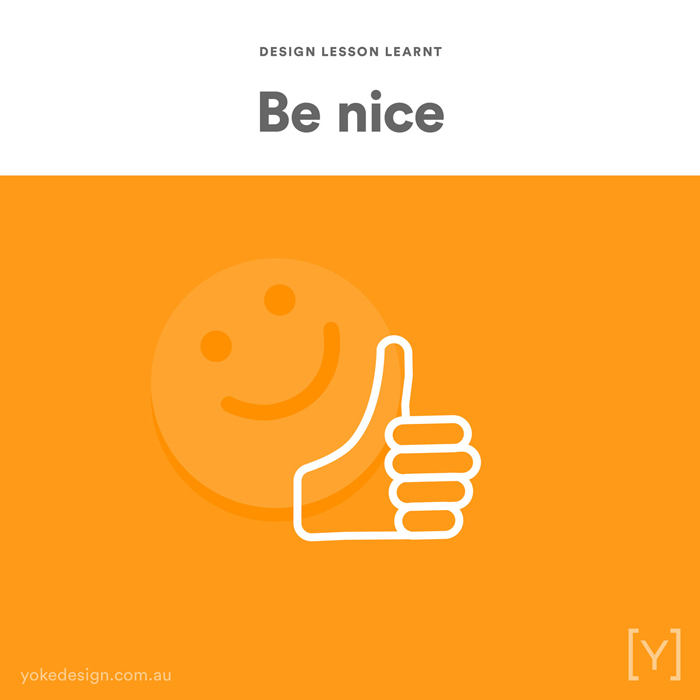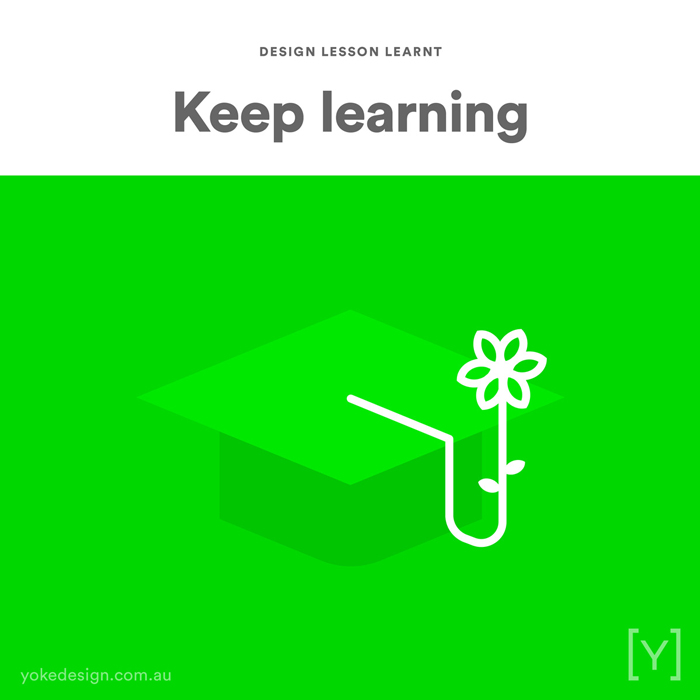A designer in agency life – 10 lessons learnt along the way
In my seven years of working as a designer I’ve learnt a few things along the way. In this post I am outlining certain things that have helped me in my design career – certain methods and attributes that I believe will help better you as a designer.
This post isn’t about how to be a successful designer in so-and-so steps, but my perception of my role as a designer and how it impacts the greater scheme of things.
So take it as you will, you may agree or disagree.
You can download the images here or click the individual images for a larger version.
1. Fight for your work
Rationalise everything you do with design thinking and reasoning.
Believe in the work you do, and know your worth and the value of your work. Treat every project and task with the best intentions to make it amazing. Good concepts get turned down if they don’t get presented properly, so do your best and back it up.
2. Detach yourself
Your personal taste may not be what is needed for the brief in front of you.
I’ve saved myself plenty of mental energy by not getting emotionally attached. Don’t get me wrong, I’m not saying not to care, but just put your ego and pride on the side. We are creatives, but we are not artists. We create for someone else’s expression, not our own. Harsh but true. Learn to detach – you’ll have peace of mind. You’ll also be able to tackle things from a different perspective.
3. Zoom out
It’s important to understand the bigger picture to figure out a solution.
I find it beneficial for myself and my ‘non-designer’ colleagues when I zoom out and consider and understand what we all do and how our roles affect each other. Some designers can’t zoom out beyond their design priorities and are too fixated on details the ‘untrained eye’ can’t see. Harshly put, these designers might lack a view of the bigger picture. Zooming out is also good for you when you’re working so closely on a project that your vision and decisions become clouded.
4. Be adaptable
Everything’s different, nothing’s the same. Learn to move and bend with the brief (or the people).
Not everything can be solved with the same approach. If one approach is not progressing anywhere, try it from another angle, opposite angle, even. This could produce the answer you’re looking for.
5. Focus
It’s very easy to go off the rails on creative tangents. Be careful. Stay focused.
In the midst of design creation (and the feeling of play), we designers sometimes get distracted and forget the ‘why’. That’s why it’s important to always have the brief in clear focus when making decisions on elements.
6. Systemise & order
Make sure you have a system and process in place, and stick to it.
Have a naming convention for all your files and folders, have a master folder and subfolders. Label everything; layers, objects, swatches, symbols, groups, character, paragraph styles, etc. Keep it consistent, down to dashes or underscores, round brackets or square brackets, uppercase or lowercase. Version control could save you the last minute panic of stress if this gets mixed up. A messy filing system will just bring headaches to anyone working on the job.
7. Ask questions
Do not assume – this leads to miscommunication and wasted time and money.
Get clarification, preferably down in written format. This saves the trouble of spending hours down an irrelevant path, as cool as that path may be. Also don’t be afraid to seem ignorant – it’s better to be honest about what you do and don’t understand.
8. Be ninja on the tools
Learn the hidden tricks of the software to improve your workflow.
Work smarter, not harder. Put paragraph styles and character styles in place early to ensure a clean artwork file. Make sure to use links to keep consistency. If the task you’re doing feels mundane, there most probably is a data merge you can do or script you can run that will do it in a click of a button.
9. Be nice
Enjoy yourself. No one wants to work with jerks.
You spend most of your day with your workmates. Be nice and get along, good vibes in the office are key to creating the best work. People are happy and can focus on the job at hand.
10. Keep learning and growing
Always be searching for more knowledge.
This is important especially in the design industry that’s so involved with technology. Designers need to keep up with so many things already, design-wise and technology-wise. But that’s also very exciting, we have so much wealth of knowledge already on the web to help ourselves grow.
I hope these 10 lessons that have helped me in my design career will also be helpful for those who are just starting out in their journey as professional designers. The more seasoned designers will probably have come across most of these already.
Throughout a designer’s career there will definitely be plenty of aha moments in addition to the ones listed above, but I’m sure the lessons in this post will be pretty much universal and encountered by most designers at some point or another.
You can download the images here or click the individual images for a larger version.
